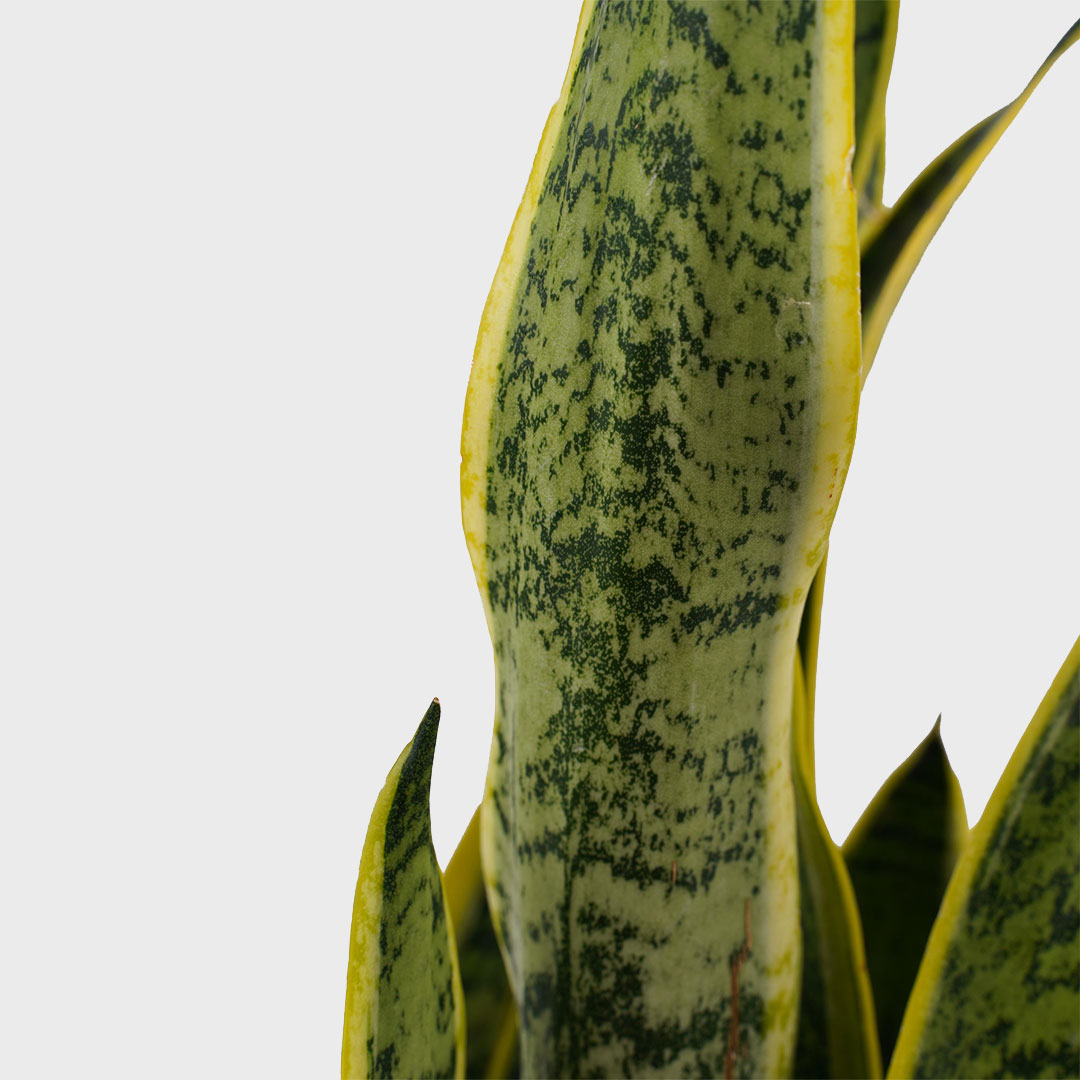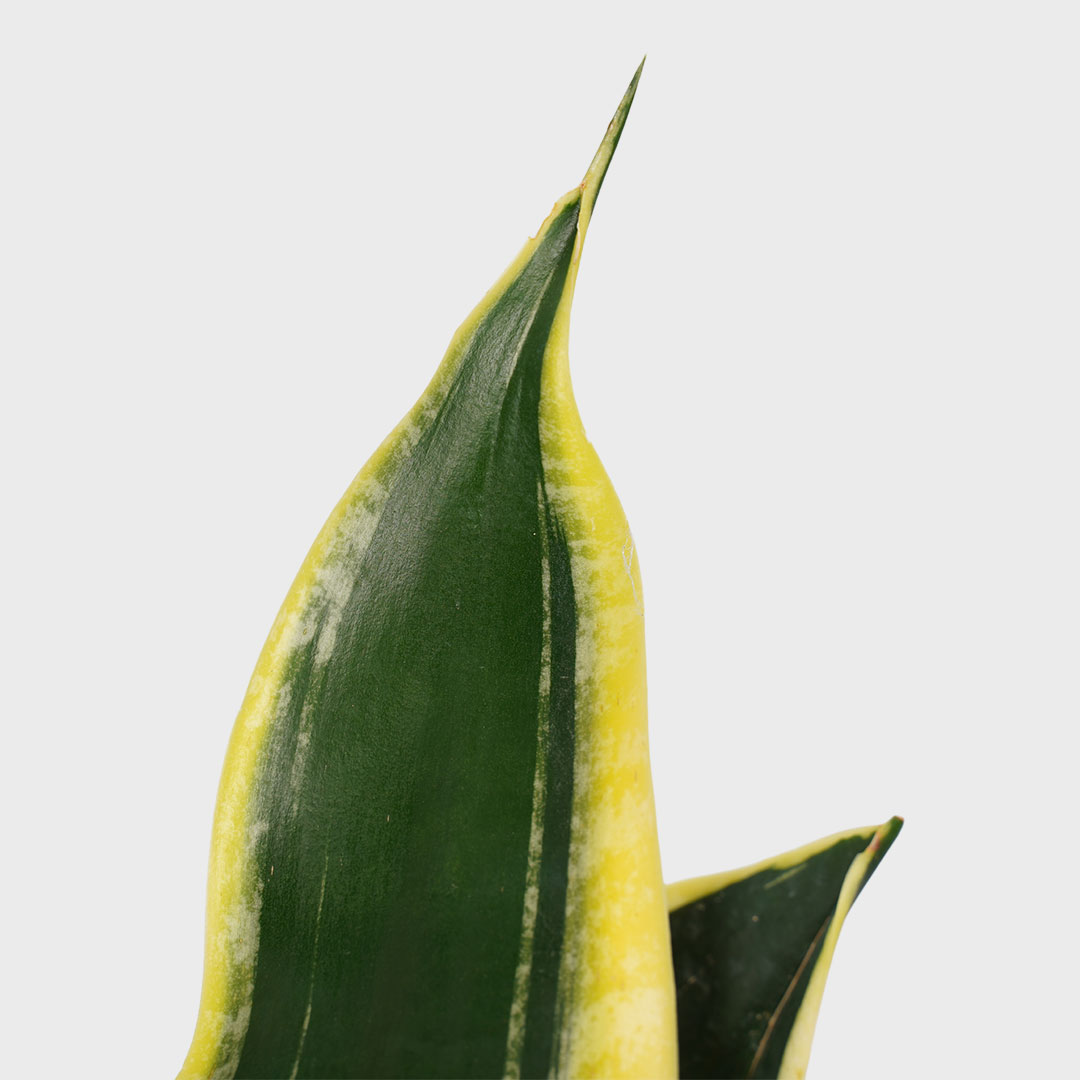
Deliver to
The Netherlands
 English
EnglishThe Sansevieria is quite a famous indoor plants because of its low maintenance nature. If you're a beginner at owning plants, the Sansevieria is the one for you. Sansevieria plans are known to thrive when their owners tend to forget about them.


Medium light
Water every 2 weeks
Toxic
Air-purifying
A Snake plant can grow on almost every location. From bright light to partial shade. They can be positioned on a location with direct sunlight, but they prefer bright medium light.
Before watering the Snake plant, check if the soil has dried out completely, which is usually only once or twice a month. Snake plants don't appreciate soggy soil. During the winter months, reduce the watering to once every six weeks. Make sure that the water can drain away well. Otherwise, water will remain in the bottom of the flowerpot and your Snake plant may suffer from root rot.
The Snake plant uses extra energy from spring onwards to make new leaves. As a result, the plant needs extra nutrients. You can provide these nutrients by plant nutrition. We recommend giving plant nutrition once a month. From spring until autumn. After autumn and in winter it is better not to give extra nutrients. In the autumn, plant nutrition can actually be harmful for the Snake plant!
Repotting the Snake plant is necessary every 2 years. Repotting the plant every 2 years gives it new nutrients and more room for root growth. The airier soil is also very good for the water flowing through. The best period to repot is spring.
The most ideal temperature for a Sansevieria, also known as Snake Plant or Mother-in-law's Tongue, is typically between 15 to 29 degrees Celsius. It is a hardy plant that can tolerate a wide range of temperatures.
Occasional pruning a Sansevieria helps remove any yellowed, damaged, or dead leaves. This will improve the plant's appearance and allowing energy to be redirected to healthy foliage. Trimming off any excessively long or unruly leaves can also help maintain a tidy and compact shape. Clean and sharp pruning tools should be used for clean cuts.
The Snake plant is not excessively susceptible to diseases and pests. Should the plant still suffer from pests, then you can use pesticide. Although pesticide can mean the end of the plant. Therefore, be careful.


Yes, it can! When the Sansevieria starts to flower, it is unique. A flowering Sansevieria is a combination of watering, location and soil type.
Sansevieria leaves usually turn yellow if the plant receives too much light. Therefore, move the plant to a location with less (direct) sunlight.
If the Sansevieria gets too little water, it will stop growing. The plant needs water to grow. In this case, water a little more or a little more often.
On average, Sansevierias do not grow taller than 150 cm. The plants do grow very slowly. Something to bear in mind!
Yes, you certainly can. See our tips on how to propagate a Snake plant.